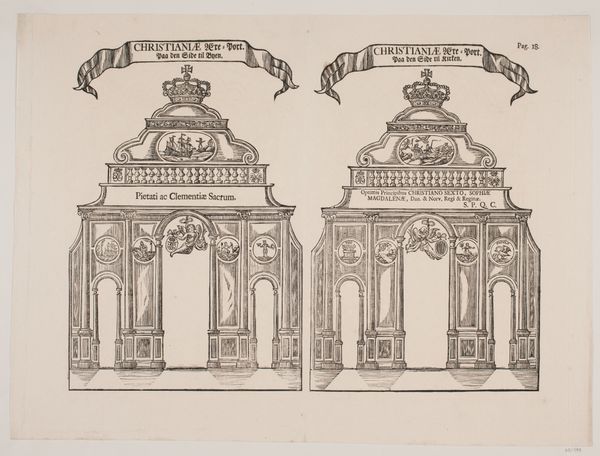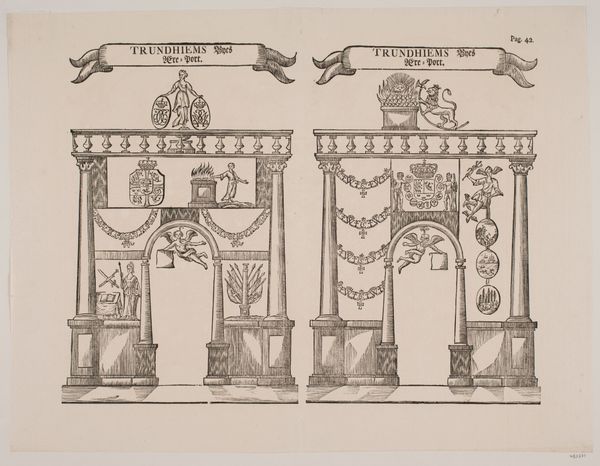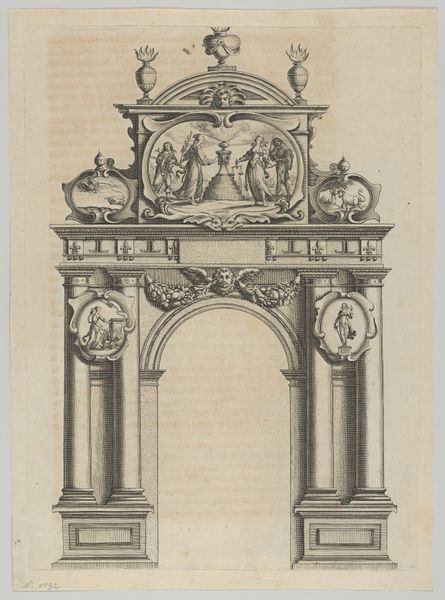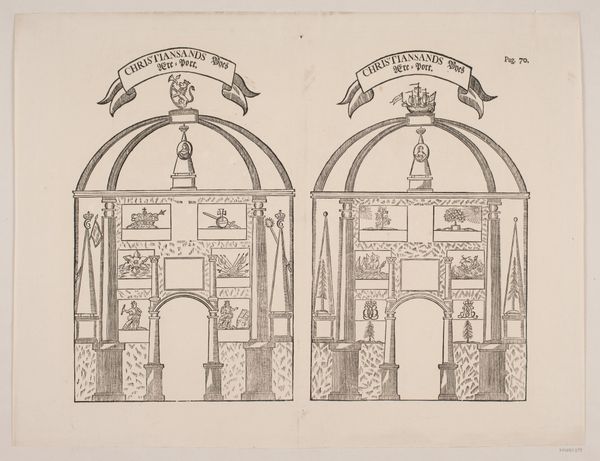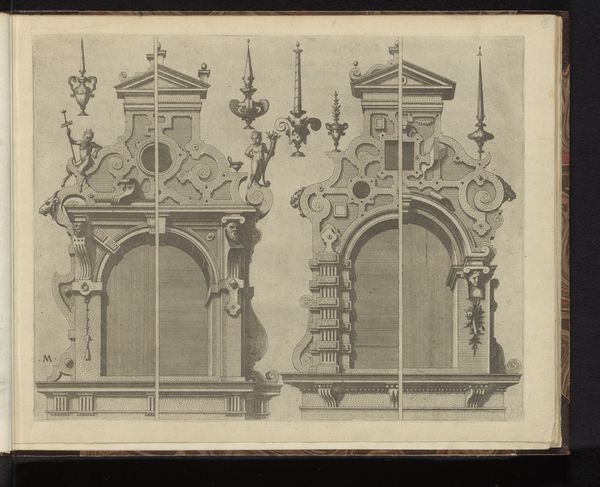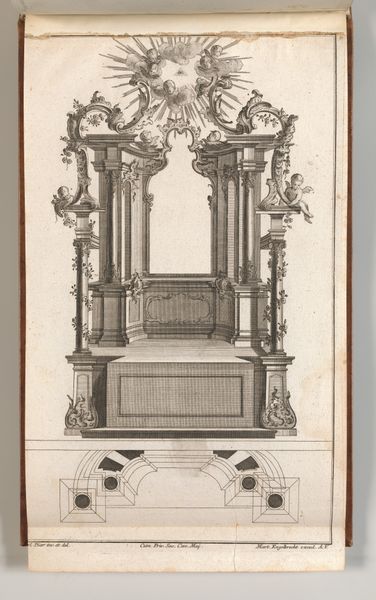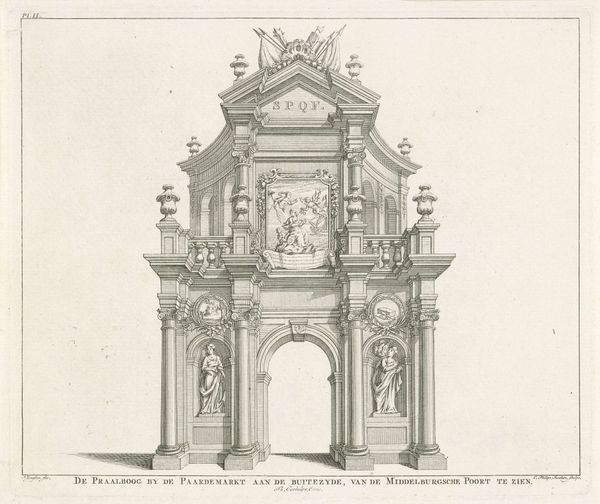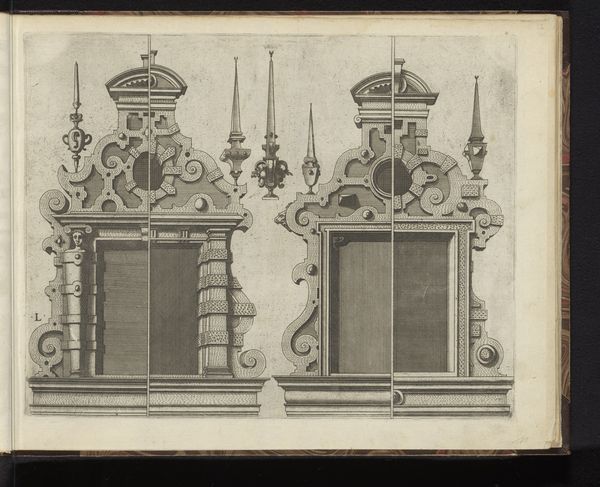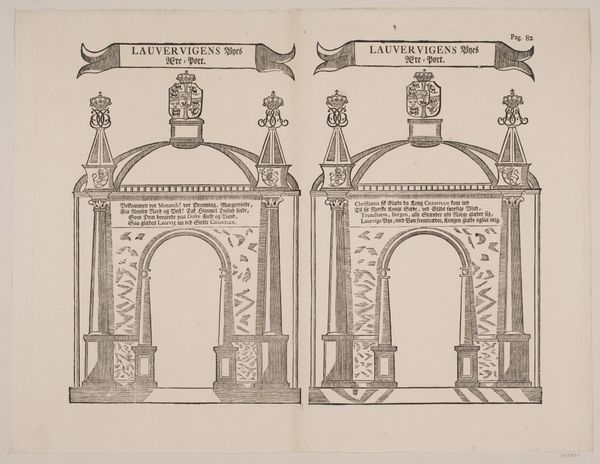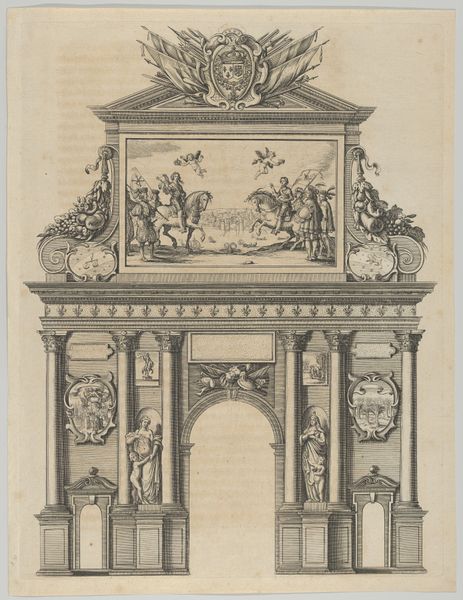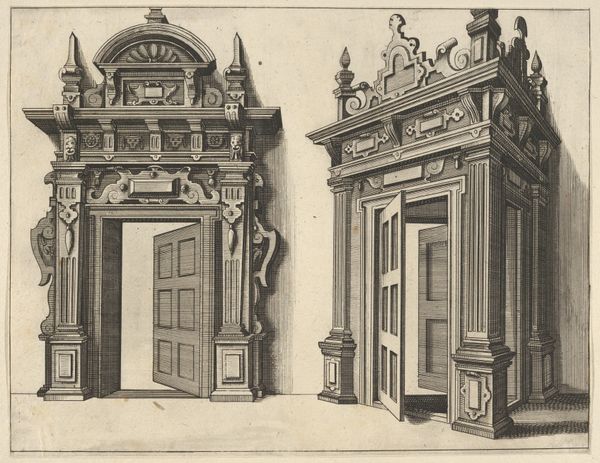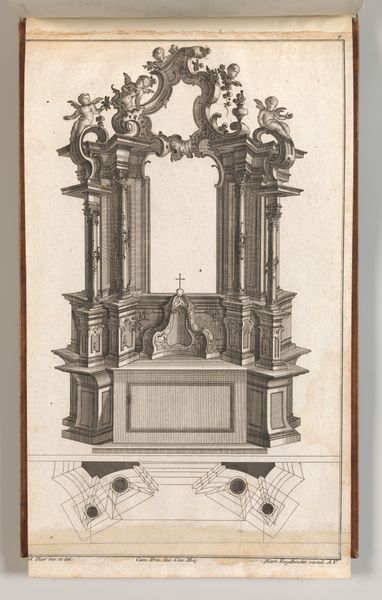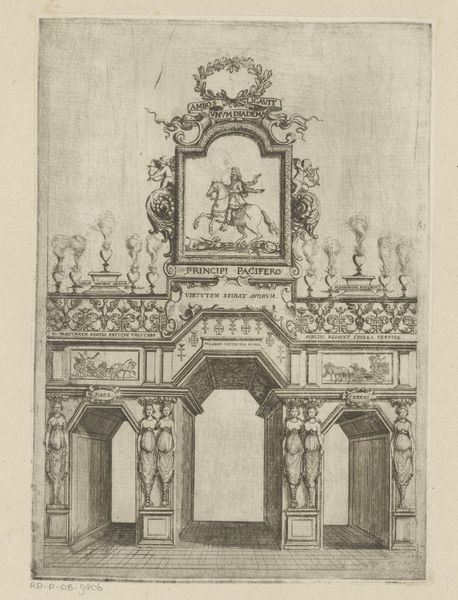
print, etching, woodcut, engraving, architecture
#
baroque
# print
#
etching
#
etching
#
form
#
woodcut
#
line
#
cityscape
#
engraving
#
architecture
Dimensions: 365 mm (height) x 480 mm (width) (bladmaal)
Editor: This etching from the 18th century is called "Bergens Æresport" and is attributed to an anonymous artist. It depicts two identical architectural structures that seem like gateways. They feel quite ceremonial. What is striking to me is how precisely these forms are rendered, almost like a technical drawing. What do you see in this piece? Curator: Well, considering the period, and its architectural theme, these are most likely triumphal arches planned, and probably actually constructed, to commemorate a specific event or the visit of an important dignitary in Bergen. The baroque style suggests that spectacle and the projection of power were paramount. Given its existence as a print, we must consider its wider distribution: how does a print like this function in shaping public perception? Editor: So it’s about communicating power? It’s interesting how a print makes something like an architectural structure—normally fixed in place—more portable and easily distributed. Curator: Exactly. This print could have been disseminated widely, reinforcing the city's connection to power and perhaps projecting an image of grandeur to other political entities. Who was this designed to impress? What local celebrations were staged there? What were the social functions of monumental cityscapes during this period? These arches were not merely aesthetic objects but tools of urban and political theatre. Editor: That completely reframes how I see it. It's not just a nice drawing of an archway; it's part of a performance! Curator: Precisely. It raises questions about the fleeting nature of these architectural displays and the role of art in memorializing such ephemeral events. Editor: It makes you wonder what other stories are embedded in the image that we can’t immediately see. Curator: Indeed. The politics of imagery were always carefully considered, particularly in works intended for public consumption. I find myself wondering about how the actual structure differs from this print, which is probably highly idealized. Editor: I now see how important it is to consider not only the artwork itself, but how the display functions socially. Thank you!
Comments
No comments
Be the first to comment and join the conversation on the ultimate creative platform.
